Estadio Metropolitano: Atletico Madrid
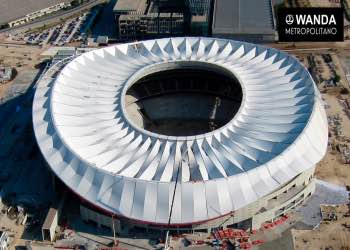
Jose Carlos Ortiz Aparicio / Flickr.com
The Estadio Metropolitano has enjoyed numerous different incarnations over the years, having first opened at the start of the 1990s. Back then it was built to be a stadium for 1997’s World Athletics Championships and was known as the Estadio de la Comunidad de Madrid. In the end Madrid wasn’t chosen as the tournament’s host, with Athens taking that honour. Nowadays, of course, it is being used as the new stadium of Atletico Madrid, with the Spanish club having taken it over and redesigned it to welcome more than 65,000 supporters through the door.
The sad fact for Atletico is that, in terms of Spanish football, they will virtually always live in the shadow of their more illustrious neighbours Real Madrid. That is true both in terms of how successful the two teams and when it comes to the size of their stadium, with the Santiago Bernabéu able to host over 80,000 fans. Nevertheless, the Estadio Metropolitano is an impressive ground and will likely be the home of Atletico Madrid for several decades to come. Having been renovated completely prior to the start of the 2017-2018 season, it’s also one of the most modern in Spain.
Stats
| Estadio Metropolitano Stats | |
|---|---|
| Year Opened | 2017 |
| Capacity | 70460 |
| Average Attendance | 59121 |
| Record Attendance | 69500 (Atlético Madrid v Real Madrid (2024)) |
| Pitch Size | 105 x 68 (7140) |
| Nickname | La Peineta |
| Former Name | Estadio de la Comunidad de Madrid, Estadio Olímpico de Madrid, Estadio de La Peineta |
| Owner | Atlético Madrid |
| Sponsor | Cívitas Pacensis |
| Clubs Hosted | Atlético Madrid |
| First Fixture | Atlético Madrid v Málaga (17/09/2017) |
| Atlético Madrid Stats | |
|---|---|
| Year Founded | 1903 |
| Nickname | Colchoneros, Rojiblancos, Atleti |
| Club Mascot | Indi |
| Rivals | Real Madrid, Barcelona |
| Previous Stadiums | Ronda de Vallecas, Estadio Metropolitano de Madrid, Vicente Calderón |
| Kit | Red, White & Blue (Home) / Dark Blue & Red (Away) / Light Blue (Third) |
| Training Ground | Ciudad Deportiva de Majadahonda |
| Shirt Sponsor | Riyadh Air |
| Team Owner | Atlético HoldCo, Idan Ofer |
| Record Goalscorer | Luis Aragonés (173) |
| Record Appearances | Adelardo (551) |
Estadio Metropolitano Photos
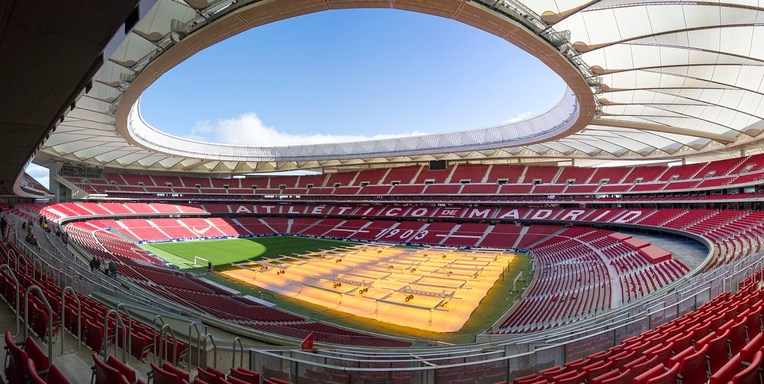
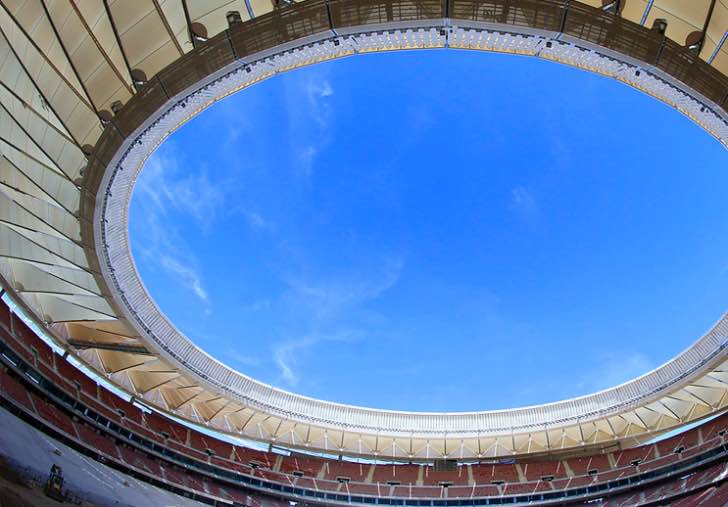
Jose Carlos Ortiz Aparicio / Flickr.com
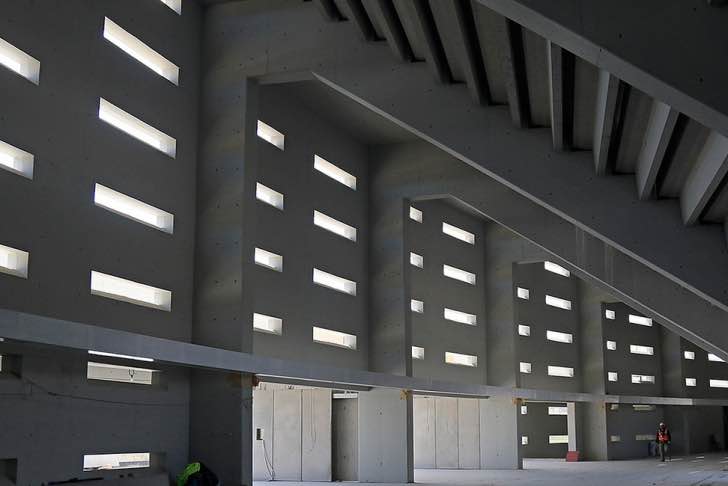
Jose Carlos Ortiz Aparicio / Flickr.com
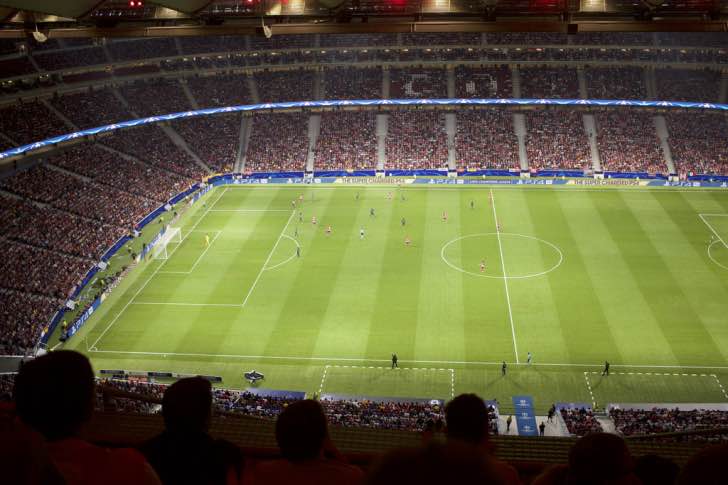
By Val de Ornia (Own work) [CC BY-SA 4.0]
Estadio Metropolitano Seating Plan and Where to Sit
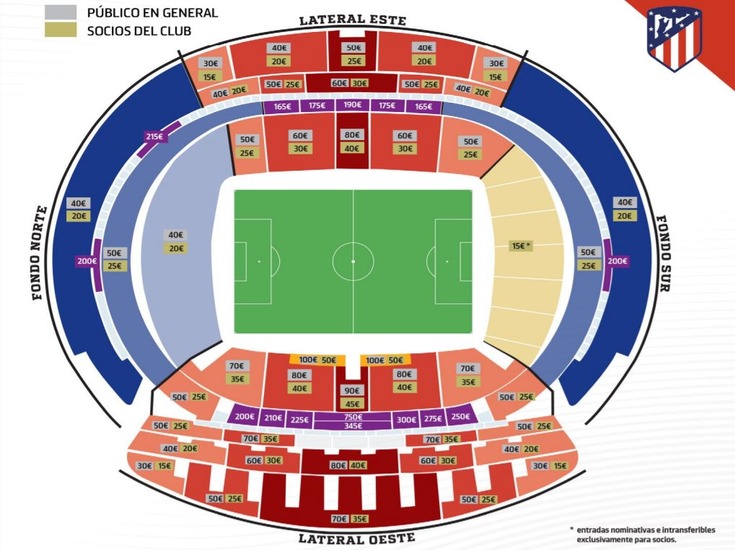
As is common with modern European stadia, Estadio Metropolitano is designed in a bowl style when it comes to seating. The Fondo Norte and Fondo Sur sit behind the two goals at either end of the ground, whilst the Lateral Este and Lateral Oeste run alongside the pitch. There are three tiers all the way around the stadium, including a layer of boxes and executive suites.
Atlético Madrid Ticket Prices
As is the case with most grounds in Spain, the difference in prices of tickets varies not just according to where in the ground you want to sit but also from week to week depending on who the team is playing. There’s also limited information available on whether youngster or concessions can get cheaper tickets. It is worth noting that you can get cheaper tickets if you are a member of the club’s official supporters group.
In 2024, when playing Real Madrid, tickets ranged from €80 to €275, but they would be significantly cheaper against almost anyone else except Barcelona.
Other things to note include the fact that senior citizens get a 25% discount on ticket prices and that the most expensive ticket in the Lateral Oeste stand is for what the club call the ‘bench experience’.
How To Get Atlético Madrid Tickets
Getting tickets for Atlético’s matches isn’t easy. The ground is smaller that the likes of the Nou Camp and the Santiago Bernabéu, which doesn’t help, but Atlético are also one of the most popular teams in La Liga. You can but try, of course, and the best places to start are the club’s official website and via entradas.com, both of which offer online sales. You can also call the ticket office by phone or visit the ticket offices in person. They’re open on match days from three hours before the game until the match kicks off.
Where to Buy
Getting To Estadio Metropolitano
Train – The new stadium can be found in the North-East part of the city, close to the airport. The vastly developing area has excellent transport links, therefore, including the Estadio Metropolitano, one of the largest Metro stations in Madrid. Getting there from London in the first place will take around a day on the train, going via Paris and Zaragoza.
Bus – Numerous local buses stop in the area close to the stadium, including the 140, the E2, the 28, the 38 and the 48.
Car – The ground is close to both the M-201 and the E-5. They’re the main roads you’ll be wanting to head to if you’re driving before following signs when you get closer.
By Air – As mentioned before, the Estadio Metropolitano is located in the part of the city of Madrid closest to the Madrid-Barajas Adolfo Suárez Airport. However, the Madrid-Cuatro Vientos Airport is actually the one that’s nearest the centre of Madrid if you’re hoping to be closer to town.
Taxi – A taxi from the Palacio Real de Madrid to the stadium will cost you about €25 and should take around twenty minutes to complete its journey.
Parking Near Estadio Metropolitano
There are 4,000 parking spaces at the stadium, with 1,000 of those being on the inside and 3,000 outside the ground. If you’re looking to drive, therefore, there should be enough room for you to park.
Useful Resources
Estadio Metropolitano Hotels
Madrid is no stranger to tourists, so the options for accommodation are endless.
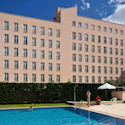
Hotel Sercotel Alcalá 611 - £70+
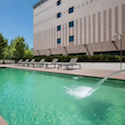
NH Madrid Barajas Airport - £80+

Hotel ILUNION Alcalá Norte - £90+
Pubs and Bars Near Estadio Metropolitano
As well as the traditional Spanish bars, Madrid has a surprising number of English and Irish style pubs too.
Lucky Loser Sport Tavern
James Joyce Irish Pub Madrid
s10bar
Hospitality

Atletico offered excellent VIP facilities at the Vicente Caderón, so it’s not a surprise to see the same thing at the Estadio Metropolitano. From private boxes through to executive seating, there are plenty of options if you want to watch an Atletico Madrid match in style.
Private Hire
The beauty for big clubs in well populated cities is that they can regularly offer their facilities to businesses and organisations who might want to use them for private purposes. Madrid is one of the most cosmopolitan and populous cities in Europe, so it’s a no-brainer for Atletico to take advantage of that fact when it comes to their new stadium.
Stadium Tours & Museum
A tour of the Estadio Metropolitano will take in the likes of the player’s tunnel, the pitch side, the press office and the dressing rooms. You’ll also have a chance to have a look around the various stands, including the VIP areas and museum.
It will cost you €22 if you’re an adult and €16 if you’re a junior to do the tour with museum entry included, with Club Members getting a 50% discount and children under 3 being able to enter the ground for free.
About Atlético Madrid

Club Atlético de Madrid was founded on the 26th of April 1903 as Athletic Club de Madrid. Unlike some clubs that can boast founders that are millionaires or professionals, Atlético was founded by three Basque students living in the city and hoping to start a club as a youth branch of the team from their childhoods, Athletic Bilbao. They were joined by dissidents from Real Madrid in 1904 and the team went from strength to strength.
Atlético’s existence has been marred by the presence of their more successful neighbours in the city of Madrid. They are no slouches, mind, with the club having won the fourth most top-tier titles in Spain. Unfortunately for Los Rojiblancos, however, they share a city with a team that have long been bigger and better than them. They’ve still won both La Liga 11 times and the Copa Del Rey ten times, the European Cup Winners’ Cup once and been runners-up in the European Cup three times, so that’s nothing to turn your nose up at!
Estadio Metropolitano History
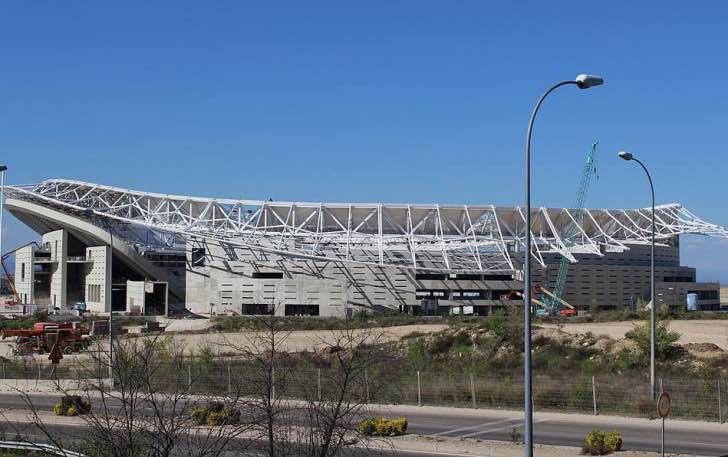
The initial design of the stadium back in the 1990s was put forward by Cruz y Ortiz, with construction getting underway in 1993. It only had about 20,000 seats and the design led to it receiving the nickname ‘La Peineta’, which means ‘The Comb’. When the 1997 World Athletic Championships were awarded to Athens rather than Madrid the ground was used for local sporting events instead until it was abandoned in 2004. At that point Madrid made an application to host the 2016 Summer Olympics, which was eventually awarded to Rio de Janeiro, and the hope was that the Estadio de la Comunidad de Madrid would become the Estadio Olímpico de Madrid.
Numerous proposals were made for the use of the stadium after the Madrid Olympic bid failed, but none were successful. That is until Atletico Madrid announced in 2013 that they would take over the site and build their new ground in the location. In 2016 the Spanish side announced that the stadium would be known as the Wanda Metropolitano due to sponsorship by the Wanda Group, a Chinese conglomerate, but that deal ran out in 2021. They do have another sponsor, Cívitas Pacensis, but when used for UEFA or FIFA events the ground will be called the Estadio Metropolitano.
Future Developments
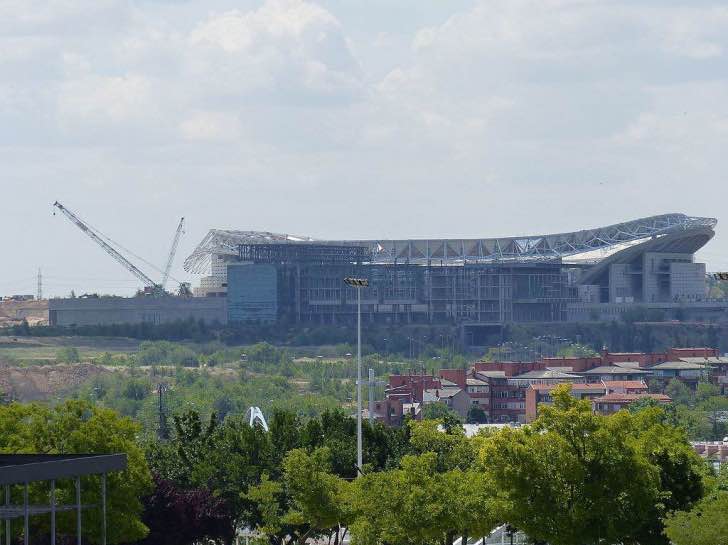
Given that the stadium only opened in September of 2017, it’s fair to say that there aren’t likely to be any developments in the near future. There are plans to develop the area around the ground, creating a sports village and even a beach, but nothing for the ground itself.
